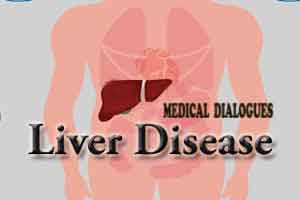- Home
- Editorial
- News
- Practice Guidelines
- Anesthesiology Guidelines
- Cancer Guidelines
- Cardiac Sciences Guidelines
- Critical Care Guidelines
- Dentistry Guidelines
- Dermatology Guidelines
- Diabetes and Endo Guidelines
- Diagnostics Guidelines
- ENT Guidelines
- Featured Practice Guidelines
- Gastroenterology Guidelines
- Geriatrics Guidelines
- Medicine Guidelines
- Nephrology Guidelines
- Neurosciences Guidelines
- Obs and Gynae Guidelines
- Ophthalmology Guidelines
- Orthopaedics Guidelines
- Paediatrics Guidelines
- Psychiatry Guidelines
- Pulmonology Guidelines
- Radiology Guidelines
- Surgery Guidelines
- Urology Guidelines
Breastfeeding cuts liver disease risk during teenage

Sydney : Women who maintain a healthy body mass index and breastfeed their babies exclusively for at least six months can help reduce the risk of children developing liver disease during their adolescence, finds a new study.
The findings showed that pre-pregnancy BMI within the normal range was shown to decrease risk of adolescent non-alcoholic fatty liver disease (NAFLD) by a half.
Also, a minimum of six months of exclusive breastfeeding can further cut down the risk by a third.
"We wanted to see if there was any association between adolescent non-alcoholic fatty liver disease, maternal factors and infant nutrition," said lead researcher Oyekoya Ayonrinde, clinical senior lecturer at University of Western Australia.
In the long-term, NAFLD can lead to scarring (fibrosis) of the liver and a potentially life-threatening condition called cirrhosis in some individuals.
"Our results demonstrate the grave impact maternal factors can have on the risk of developing liver disease in adolescence," Ayonrinde added.
Recent studies suggest that it has become the most common liver disease in people aged two to 19 years old, with half of obese children suffering from the condition. Factors including excessive childhood weight gain are believed to be key contributors to this rise.
The study demonstrates the importance of proper infant nutrition and the benefit of exclusive and extended breastfeeding for six months, the researchers suggested.
The team collected data such as maternal pregnancy, birth, childhood and adolescent characteristics through questionnaires, direct interviews, physical examinations and blood tests.

Disclaimer: This site is primarily intended for healthcare professionals. Any content/information on this website does not replace the advice of medical and/or health professionals and should not be construed as medical/diagnostic advice/endorsement or prescription. Use of this site is subject to our terms of use, privacy policy, advertisement policy. © 2020 Minerva Medical Treatment Pvt Ltd